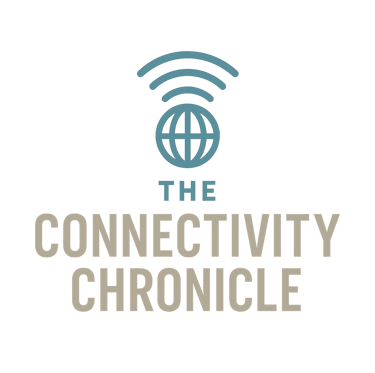AI-Enabled Health Triage: Driving Connectivity and Equity in Rural Communities
Across the world, rural and remote communities face persistent challenges in accessing timely, high-quality healthcare. Limited infrastructure, long travel distances, and a shortage of trained staff often mean that residents wait too long to receive essential care—or worse, go without it altogether. In this context, digital health innovations, powered by secure connectivity, offer a transformative opportunity to bridge the healthcare gap. One emerging solution is AI-enabled health triage through mobile applications, underpinned by robust, solar-compatible internet connectivity. This model, outlined in a new pilot initiative led by EdgeSpark and Network Equity, is designed to reduce barriers to healthcare access and strengthen frontline health systems in rural areas.
9/6/20253 min read


Across the world, rural and remote communities face persistent challenges in accessing timely, high-quality healthcare. Limited infrastructure, long travel distances, and a shortage of trained staff often mean that residents wait too long to receive essential care—or worse, go without it altogether. In this context, digital health innovations, powered by secure connectivity, offer a transformative opportunity to bridge the healthcare gap.
One emerging solution is AI-enabled health triage through mobile applications, underpinned by robust, solar-compatible internet connectivity. This model, outlined in a new pilot initiative led by EdgeSpark and Network Equity, is designed to reduce barriers to healthcare access and strengthen frontline health systems in rural areas.
The Rationale: Why Rural Communities Need Digital Health
Rural communities are disproportionately affected by inequities in healthcare. For example:
Lack of access to services: More than 2,000 predominantly rural residents currently lack access to digital health services, limiting opportunities for early detection of health risks. This gap results in poorer health outcomes compared to urban populations .
Heavy travel burdens: Rural patients often travel hundreds of kilometres to reach the nearest health post or hospital. This strain not only impacts patients but also increases pressure on health workers, who must spend valuable time coordinating care and referrals .
Missed early intervention opportunities: Without accessible screening and diagnostic tools, preventable conditions—such as respiratory illness, diabetes complications, or maternal health risks—often escalate before being detected .
AI health triage applications, supported by reliable internet, can change this equation. By enabling frontline workers to detect early warning signs and connect patients to appropriate referral pathways, communities can prevent emergencies and reduce long-term health burdens.
Objectives of the Pilot
The initiative has three core goals:
Extend secure, solar-compatible internet connectivity to selected rural health facilities and aid posts. Energy reliability is a critical factor in remote locations. By integrating solar-compatible systems, the model ensures that internet access remains stable, even in areas without dependable power grids.
Deliver AI diagnostics and triage tools to frontline workers in remote locations. These tools act as “digital allies,” helping nurses, health aides, and volunteers rapidly identify symptoms, assess urgency, and recommend next steps. AI can’t replace human judgment, but it can significantly enhance decision-making, especially where clinical expertise is scarce.
Strengthen early detection and referral pathways for at-risk patients. With better connectivity, patients can be identified earlier, referred more effectively, and monitored continuously. This reduces travel burdens, prevents unnecessary hospitalizations, and ultimately saves lives.
Why AI-Enabled Triage Matters
AI-enabled triage leverages algorithms trained on medical datasets to analyse symptoms and provide risk assessments. When combined with local data and frontline experience, this becomes a powerful tool in community health.
Scalability: AI applications can serve multiple communities simultaneously without requiring a proportional increase in medical staff.
Consistency: Algorithms apply the same standard of assessment regardless of location, ensuring equity across rural and urban areas.
Integration: When paired with electronic health records and referral systems, AI triage can strengthen continuity of care across fragmented systems.
Recent studies have shown that AI-driven triage systems can increase diagnostic accuracy and reduce time to care . In rural Africa, similar digital health pilots reduced maternal mortality by enabling faster referrals for obstetric emergencies . In Australia, telehealth and digital triage models introduced during COVID-19 helped maintain service continuity in remote Aboriginal communities .
Connectivity as the Backbone
No digital health solution can function without reliable connectivity. Many rural clinics face intermittent or non-existent internet access, making cloud-based applications and telehealth nearly impossible.
Here, EdgeSpark’s solar-compatible connectivity systems are key. Designed for low-resource, remote contexts, they provide:
High-quality, encrypted internet suitable for sensitive health data.
Compatibility with solar energy sources for off-grid reliability.
Scalability to expand from single aid posts to wider regional health networks.
Connectivity not only supports health triage apps but also opens doors for education, government service delivery, and community resilience planning, multiplying the benefits beyond healthcare.
Equity at the Core
The involvement of Network Equity ensures the program is not just about technology, but about fairness and access. The initiative emphasizes:
Cultural appropriateness: Solutions will be co-designed with local health workers and communities.
Sustainability: Training and capacity-building will empower local staff, reducing dependency on external support.
Social impact: By reducing health inequities, the pilot contributes to stronger, more resilient rural communities.
Looking Ahead
This pilot is more than a technology trial—it is a proof of concept for a new model of rural healthcare delivery. By combining secure, solar-compatible internet with AI-enabled health triage, the initiative seeks to transform how communities access and experience care.
If successful, this approach could be scaled across other rural and remote regions globally, from Pacific Islands to remote Australian homelands, where health inequities persist.
References
World Health Organization (2021). Improving health service delivery in rural and remote areas.
Australian Institute of Health and Welfare (2022). Rural & remote health: Overview.
United Nations Development Programme (2020). Digital health strategies in resource-constrained settings.
Topol, E. (2019). High-performance medicine: the convergence of human and artificial intelligence. Nature Medicine, 25(1), 44–56.
GSMA (2019). Mobile technology in maternal health: Case studies from Sub-Saharan Africa.
Thomas, J. et al. (2021). Telehealth in remote Aboriginal communities: Lessons from COVID-19. Australian Journal of Rural Health.


Far North Consulting Pty Ltd t/a Groundwork Consulting
© 2025 Groundwork Consulting
ABN 77 649 525 806
MAKING GOOD IDEAS WORK
Video Platform Links





